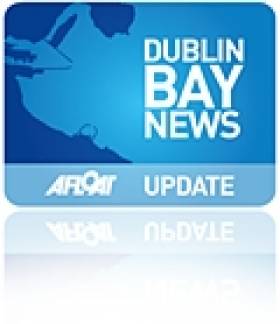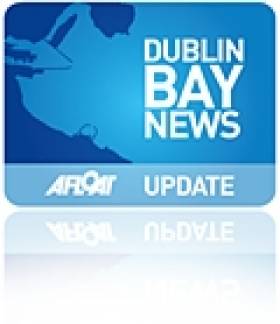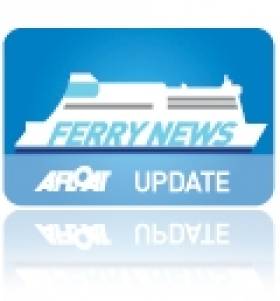Displaying items by tag: Dun Laoghaire News
A Brighter Future for Dun Laoghaire Maritime Museum
For several years the museum has been closed for vital repair and extensive renovation work. In October the M.I.I. will celebrate their 70th anniversary which will be marked by a 'soft launch' and in the following year the museum is to be officially re-opened in Easter 2012.
'Seafront Memorials' Tours of Dun Laoghaire Harbour
The tour which is free starts at the meeting point of the Queen Victoria Fountain which too forms part of the tour alongside the George VI memorial
and the Christ the King monument.
The outdoor event is part of the 'Summer of Heritage' which is organised by Dun Laoghaire-Rathdown County Council. The initiative is now in its fourth year and this year's highlight of the programme are tours of the newly renovated Seapoint Martello tower.
The coastal structure has been restored and is a fine example of these 19th century defensive forts, built along the coast to defend during the Napoleonic wars.
This summer also sees Carrickbrennan graveyard feature for the first time, the resting place of many sailors lost in maritime disasters since the 17th century.
Sightseeing along 'The Metals', a historic pathway that linked the quarry in Dalkey to the harbour in Dún Laoghaire also returns in the programme due to its popularity last year.
To read more about the the Summer of Heritage other free events in the arts, literature, sports, music and for the family, go to www.dunlaoghaire.ie/summer-of-heritage/ and www.dlrevents.ie/heritage11.html
- Events
- RNLI
- dlrcoco
- Dublin Bay News
- Dun Laoghaire Harbour
- Coastal Notes
- Dun Laoghaire News
- Seafront Memorials
- Guided Tours
- DunLaoghaireRathdown County Council
- DLR
- DLR events
- Martello Towers
- Seapoint Martello Tower
- The 'Metals'
- Queen Victoria Fountain
- King George VI monument
- Crimean War cannon
- Event news
- Napoleon
- Napoleonic Wars
- 1895 Dun Laoghaire Lifeboat Disaster
- RNLI Dun Laoghaire
- Christ the King monument
- Summer of Heritage
'Bag' that Maritime Museum
A 'Bag-Packing Day' in aid of the Maritime Museum in Dun Laoghaire is to start tomorrow, writes Jehan Ashmore.
The fund-raising activity will also run on the Friday and Saturday at the Tesco Bloomfield Shopping Centre off Lower Georges Street.
Volunteers are invited to assist in providing two hours of their time to help raise funds for the Maritime Museum which is currently closed due to ongoing renovation work.
For further information please call (01) 214 3964 or email: [email protected]
The museum is located in the former Mariners Church and is run by the Maritime Institute of Ireland (M.I.I.). The museum is to be officially reopened in March 2012, however they intend to be open to the public before their 70th anniversary in October 2011.
Information about the M.I.I. and the museum which welcomes new members can be found on www.mariner.ie
HSS Sailings Resumed
The Stena Explorer had completed her first sailing from Holyhead yesterday morning, the fastcraft having departed the Welsh port at 10.00hrs.
Due to the technical difficulties, the Stena Explorer was not in a position to accommodate passengers on the return crossing, though the fastcraft did depart Dun Laoghaire 'light' (without passengers) at 18.45hrs for Holyhead.
The Stena Explorer resumed service with this morning's 10.00hrs sailing from Holyhead to Dun Laoghaire.
The re-introduction of the Stena Explorer is to provide greater capacity during the summer season compared to the smaller Stena Lynx III, which previously served the route until early January. The HSS will operate the two-hour route with a daily single round trip up to 13 Setember.
Lecture: 'The Kowloon Bridge & Her Sisters'
The Stella Maris Seafarers' Club, Beresford Place, is located beside Busaras and faces opposite the rear of the Customs House. Nearby is the Irish Life Center (ILAC) which is convenient for car-parking and buses, the 'Red' Luas (Busaras stop) and DART stops at Connolly /Tara St. stations. All are welcome, bar and refreshments and a voluntary contribution is appreciated.
For further information about lectures and updates on the M.I.I's maritime museum located in the Mariners Church, Dun Laoghaire log on to www.mariner.ie. The museum which is due to reopen this year are looking for volunteers to help, for further details click here.
HSS Fast-Craft to Return on Dun Laoghaire Route
According to Stena Line over 70% of its passengers business is carried by the HSS Stena Explorer in the high season. It is felt that the 1996 Finnish built fast-craft is better suited for the service due to a loyal customer base which was reflected by repeat bookings and their preference of the HSS craft on the 120 minute (2 hour) route.
A daily single round trip is scheduled with sailings from Dun Laoghaire to Holyhead departing at 13:15hrs. The corresponding sailing from the Anglesey port departs at 10.00hrs and arrives at the Irish port at 12 noon. Sailings will operate through the summer until 13 September.
From there on Stena will make a decision as to its continuing schedule, though it is widely believed that the prospects of the fuel-thirsty, expensive to run HSS fast-craft service are likely to be at an end of an era.
Last month negotiations over the core issue of harbour fees were held between Stena Line and Dun Laoghaire Harbour Company. It is understood that the annual fee of €6.5m was dropped to €2m. The board of the harbour company has given a 'conditional green light' of a new ferry contract to Stena Line to run the service for the next two years with an option of a third year.
The service closed for its seasonal break earlier this year on 5 January with the 'Lynx' going into temporary lay-up at Holyhead's inner harbour to join the HSS Stena Explorer. The HSS had been 'wintering' at the port since September sailings were taken over by the Lynx.
Earlier this month the Stena Lynx III came to Dun Laoghaire to continue her lay-up period. The 1996 Tasmanian built craft will stay there before resuming seasonal sailings between Rosslare-Fishguard in tandem with the conventional ferry Stena Europe.
In the meantime the craft is berthed at the harbour's two-berth ferry terminal at St. Michaels Wharf. The HSS berth is only designed for this type of fast-craft whereas the other berth now occupied by the Lynx was built originally for conventional ferries but was re-configured last year to suit the fast-craft.


































































